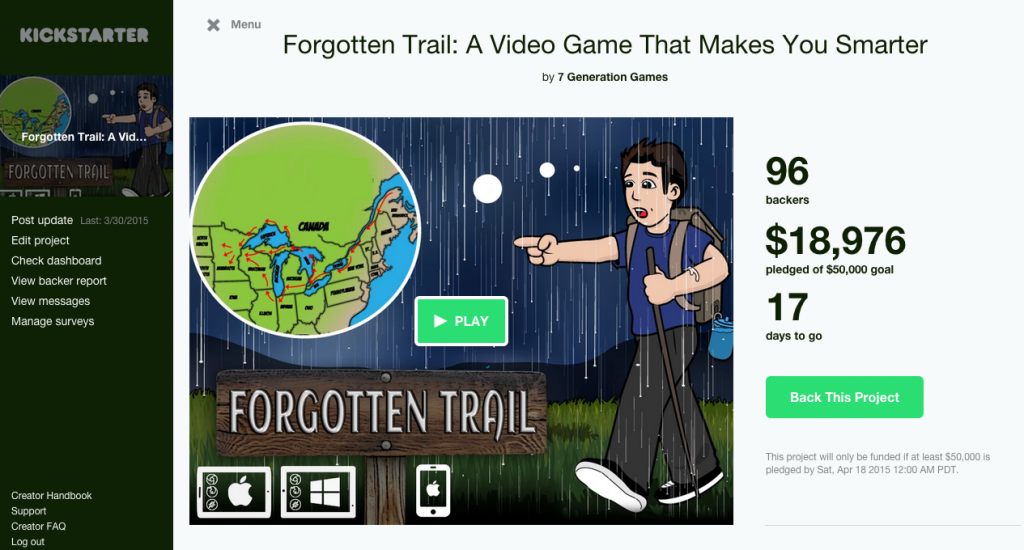I wrote a blog post last week about community rounds and how we had been asked if we’d consider doing one. And since posting it, I have gotten a handful of questions that I figured I’d tackle in a single post that I could share more widely. In fact, some of the questions were questions I had when I started looking into the whole community round concept.
Wait, so is a community round different from doing a Kickstarter?
Short answer, yes. Longer answer, because when people ask it they usually are looking for a little more than a yes or no question, is that a community round is a form of a crowd equity campaign where a Kickstarter (or similar effort) is a type of traditional crowdfunding campaign. (This explanation may only add to the confusion because a community round is a type of funding round as well.)
The TLDR version of the following is: In Kickstarter, you’re backing a project; in a community round, you’re backing a company.
But to add a little more clarity, with a Kickstarter or similar platform, when you back a project, you are doing just that – backing a project, which is often a single product. For example, in our case, when we did previous projects on Kickstarter, we were raising the money to develop a single game. And in the end, the reward (what you get in return for backing the project) is typically a one-off item, e.g. the actual game or movie or whatever the deliverable was of the project you backed. So basically, you back a company’s project on Kickstarter and you get a copy of the final product.
In a community round – or crowd equity campaign – you are actually investing in the company itself. In short, you are not backing a single product, but you are backing the company as a company. And whereas with Kickstarter, you get a copy of the company’s project as your reward, with crowd equity, if (and in investing, it’s always an “if”) the company that you invest in does well, then down the road, you stand to get your money back plus some – just like with other financial investments.
If you do a community round, do you end up with like 1,000 people on your cap table – and what does that mean for investor voting rights?
The first question about community round vs. Kickstarter is one that I got most from folks who aren’t super involved in the world of tech and startups. This question is the one I got most from folks who are working in the industry – both from startup founders and a few investors.
As before, shortest answer first: No. But since again, the folks asking were looking for more than a monosyllable, I will provide a bit more context.
Now, mind you, I am just an early stage CEO who has spent some time digging into this process to decide if it’s something that would make sense for 7 Generation Games to do. I’m not even a “self-proclaimed” expert, let alone any kind of recognized expert. But as I did used to be a reporter and I suppose now that I’ve got some articles published in academic journals I’d also be qualified as a researcher, so you can trust that I am pulling this information from legitimate sources and conversations with folks more qualified than me to speak on the subject – and am not just making it up or pulling for a post I read on Aunt Betty’s Facebook or whatever.
Now, long, long ago, like way back in the 2010s, when crowd equity was a relatively newer thing, my understanding is that it was way more of a headache – and you were required to have crazy long cap tables and all these things. (I’m not super clear on the whole history because it wasn’t really relevant to what it all involves today – which was what I really cared about in looking into the subject – but my point is, it used to be way more painful of a process than it currently is. I remember hearing about crowd equity some years back and all that it entailed and thinking, “That sounds like a bit of a headache…” What I’ve learned about it more recently seems to have solved a number of those issues.)
But in short, because it used to be less than ideal before, there have been over the last few years changes to how crowd equity investors are organized and managed.
As I wrote a little bit about in my initial community round post, using an SPV, a community round is now listed as a single line on your cap table. Using an SPV, the hundreds or even thousands of investors that you have will not have individual voting rights, but instead there is going to be a lead investor or manager, who will make the decisions/vote for the collective as a whole.
In short, doing a community round is definitely way easier than it used to be – which is something I did not know when I first looked into it as a possible way to raise capital.
We are doing a community round!


